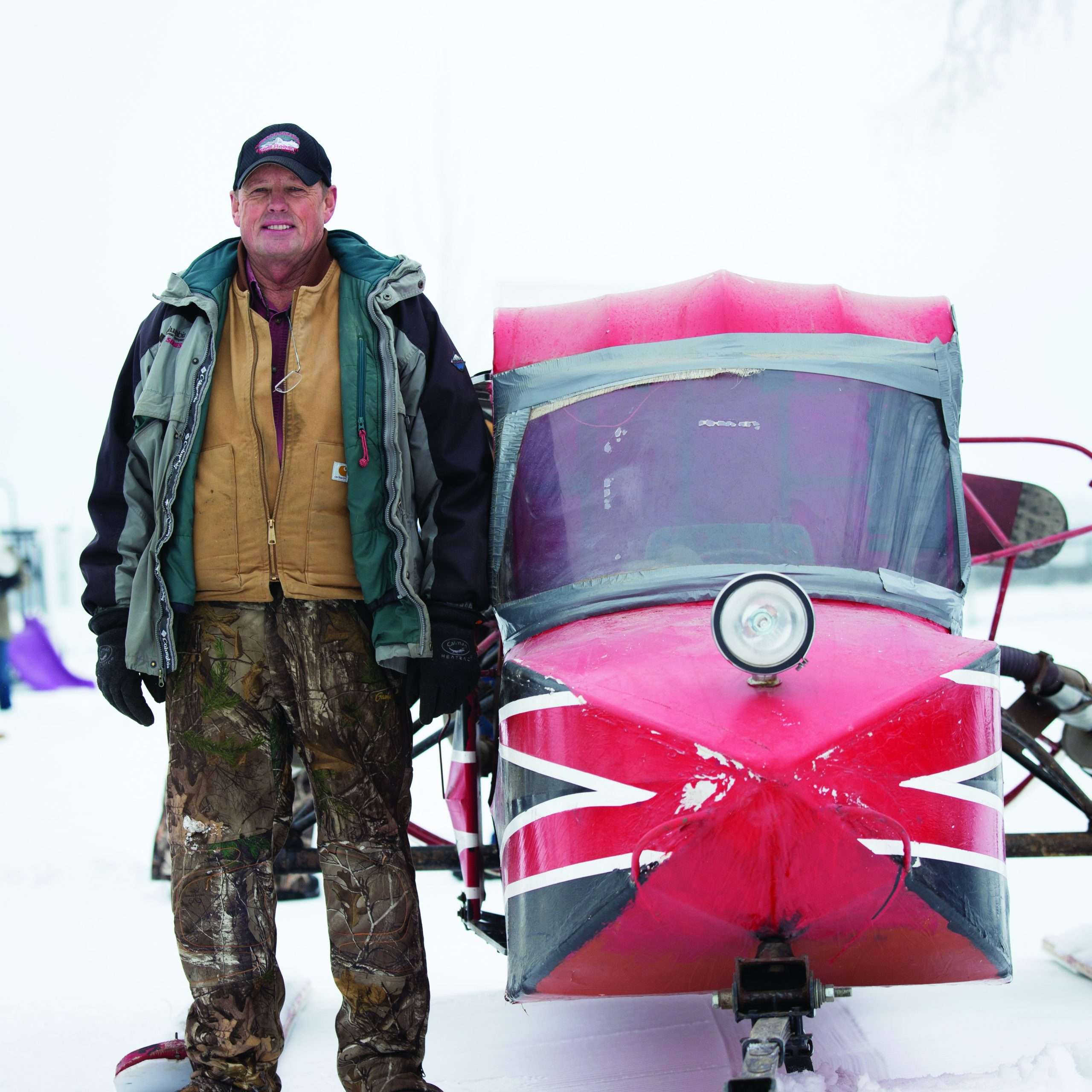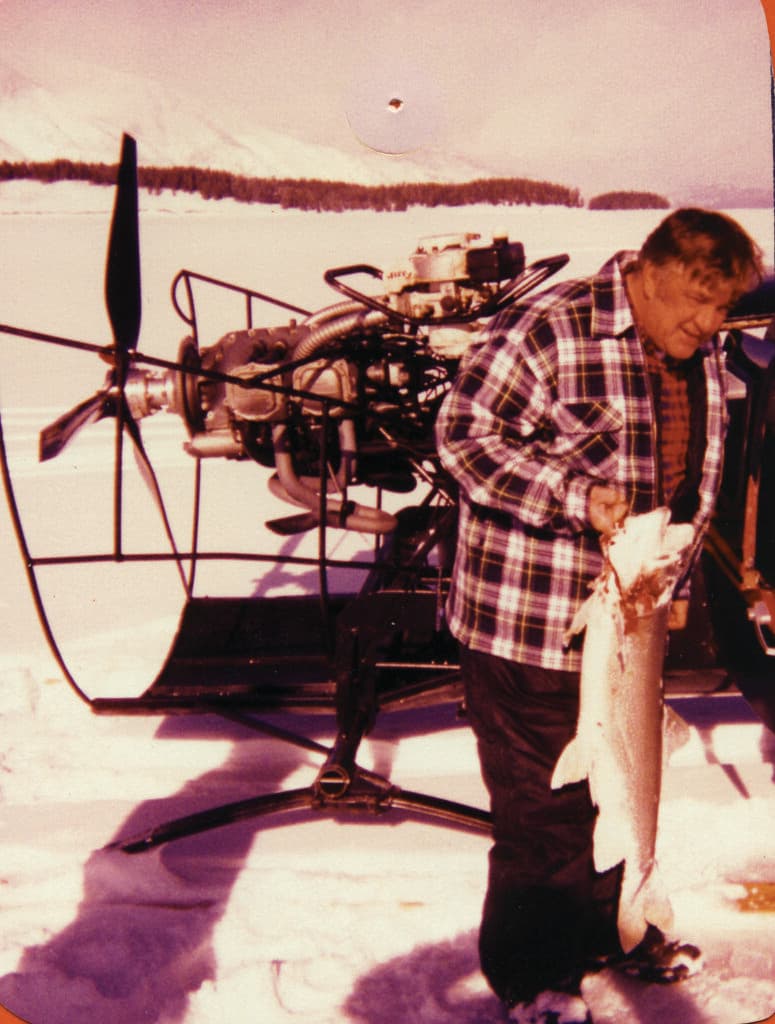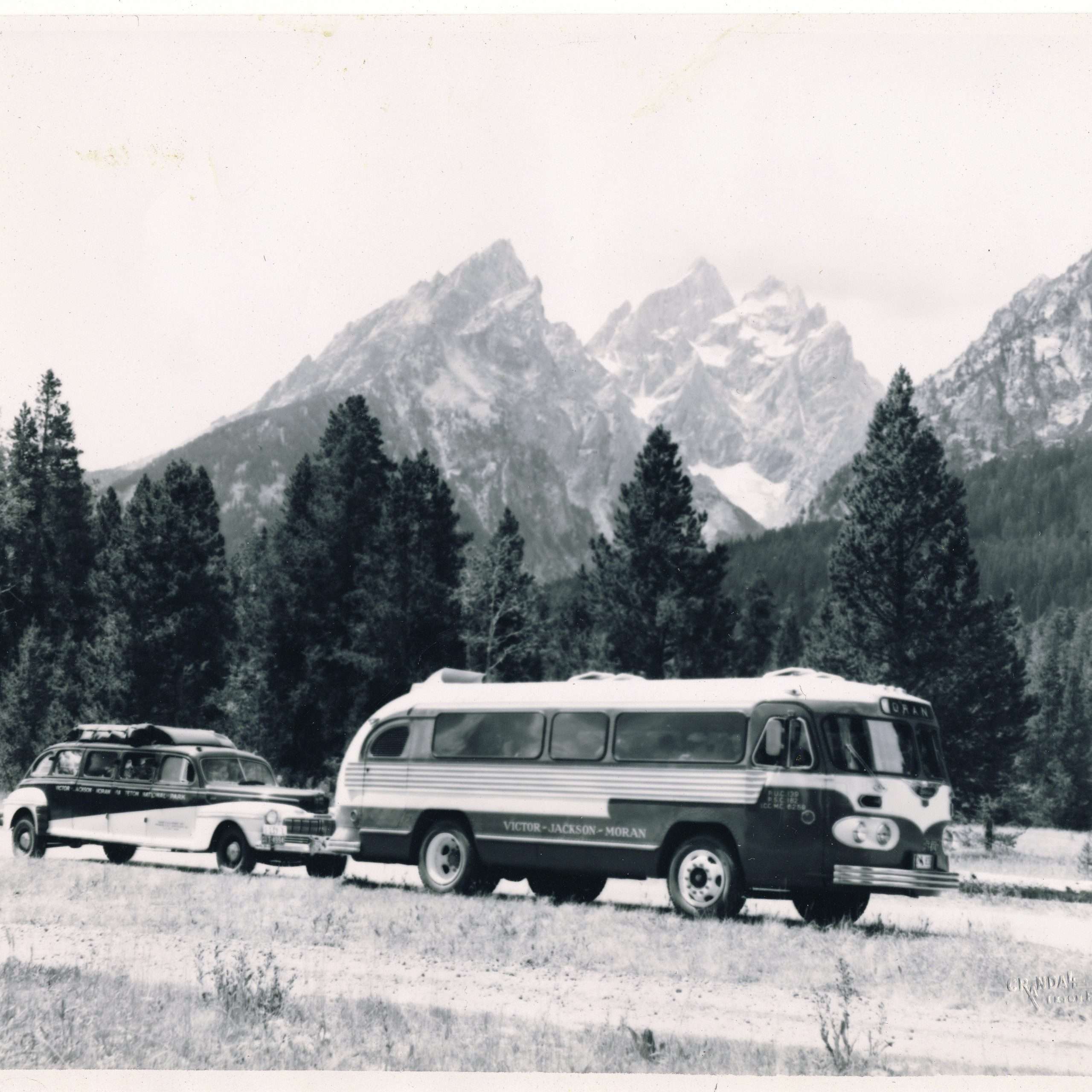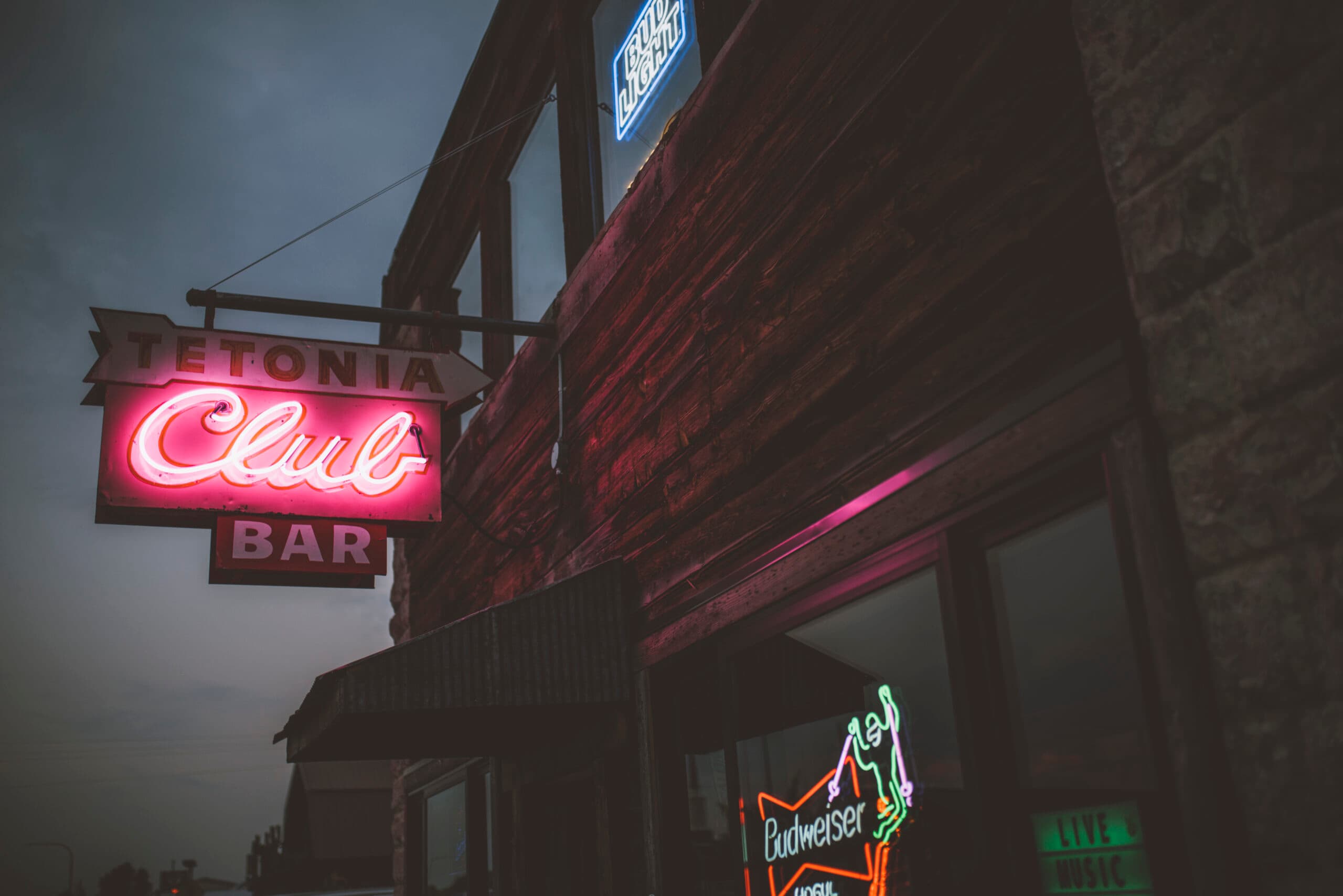Flying Over the Snow

People needed to get supplies and services to rural and remote areas, and trekking over deep drifts of snow could be tedious even when winter weather was sunny and still. The use of horses and sleighs was often inadequate, especially in emergency situations.
Nineteen-year-old Karl Lorch from Spy Hill, Saskatchewan, is credited with fashioning the first snowplane in 1929. His earliest experiments involved building a makeshift rig from an old Model T Ford, with an aircraft propeller added to a rear-mounted engine, skis on the front, and chained wheels on the back. This soon evolved into a lightweight tubular-steel frame covered with linen sheathing, a construction method favored by aircraft builders of the day. Also like an airplane, it was driven by a propeller made of birch and walnut, while ski runners both fore and aft were made of white oak, their fronts curved by soaking the boards in hot water on the kitchen stove, bending them in a press, and drying them over a hot-air register in the house.
It wasn’t long before Lorch had outgrown the family home and launched into full production in a heated shop behind his father’s Ford garage. As demand for his snowplanes grew across the Prairie Provinces, so too did his workforce; he had as many as twenty employees at the peak of production. He also opened a sister plant at Wolford, North Dakota, to construct snowplanes primarily for mail carriers in the United States. But this new, versatile mode of over-snow travel proved to be valuable and efficient not only for those hauling the mail, but for physicians making house calls at outback residences, teachers needing to reach remote rural schools, and others.
Lorch’s production ended in 1955, after the introduction of the rotary snowplow made it possible to quickly reopen prairie roads after blizzards. It was about this same time that the first Canadian-made Bombardier snowcoaches began appearing and that the earliest tracked snowmobiles roared onto the scene. (The first Polaris prototype, which hit the snow in January 1956, had a track made from a grain-elevator conveyor belt and pieces of a Chevrolet bumper for skis.)
Numerous American companies also produced snowplanes from the 1930s into the ’50s; outfits like Kristi and Trail-A-Sled, and, locally, the (Reuel) Call Company of Afton, Wyoming, and (Fred) Abercrombie Snowcars of Jackson Hole. Improvements in construction materials—fiberglass, Plexiglas, and lightweight sheet metal used for aircraft skin—brought the weight of the vehicles down considerably. Most snowplanes seated from two to six passengers, with the largest seating up to nine. They featured front-ski steering and little if any braking power; only a few models had a brake arm that could be lowered to the snow to assist in stopping. Their light aircraft engines produced between 65 and 245 horsepower, and speed over the snow was impressive, up to 85 miles per hour—or even 100 mph with a good tailwind.
In the United States, snowplanes became particularly popular in the greater Yellowstone region. According to Lee H. Whittlesey in the book Yellowstone National Park, “… Walt Stuart built the first known snowplane at West Yellowstone about 1935. They could go very fast over snow, but their rear propellers at ground level made them potentially dangerous. Nevertheless, these machines took some visitors into Old Faithful during winters in the late 1940s.”
Indeed, the spring 1999 edition of Yellowstone Science contains an article titled “The Development of Snowmobile Policy in Yellowstone National Park,” in which Michael J. Yochim wrote: “The touring possibilities of the unusual vehicles became obvious; in January 1949, thirty-five visitors entered the park in nineteen snowplanes from West Yellowstone. The superintendent of the park prophetically reported that ‘it appears that this mode of travel is becoming more popular.’”

The machines were also used by Yellowstone park rangers needing a fast and reliable way to move vast distances in winter. Rangers utilized snowplanes for such tasks as surveying wildlife herds, while geologists also used them for research purposes. Grand Teton National Park followed suit, with snowplanes employed for interior access during the winter months starting in the late 1940s.
Snowplanes were used for official duties outside the parks, as well. According to an article titled “Windjammers of the Snowdrifts” in the February 1948 Popular Mechanics magazine, “At Jackson [Wyoming], Sheriff Olin Emory has an Abercrombie Snowcar that he uses for mercy errands and law-enforcement. Most ranchers and stockmen live miles from any open road in winter but the sheriff makes his rounds quickly with the snowplane. … Game wardens patrol with them and conservation officials have found them indispensable for the winter task of counting elk and deer.” Interestingly, another Teton County, Wyoming sheriff, Bob Zimmer—top brass from 1999 through early 2009—was a more recent snowplane enthusiast.
The 1948 article also states that it was not uncommon for a snowplane to travel the fifty miles from Swan Valley to Jackson Hole—over two mountain passes—in less than two hours.
Thanks to snowplanes, the winter wilderness became a viable destination for a significant period of time prior to the rotary snowplowing of the roads in and out of both national parks. As winter tourism increased in Yellowstone, entrepreneurs proposed offering commercial park tours in snowplanes, but they were turned down. By the mid-1950s, however, Bombardier’s snowcoach, with its large heated cab and lacking the noise and propeller hazard of a snowplane, started becoming an accepted mode of transportation for groups of winter visitors to Yellowstone. In 1963, snowmobiles began entering the park. Collectively, these marked the demise of the snowplane, which yielded to these safer, quieter, and more comfortable modes of over-snow transport.
During the snowplane’s heyday, basically the late 1930s through the mid-’50s, the machines also gained a large recreational following in the tri-state area around Yellowstone. Locals who loved to ice fish used their snowplanes to access fishing holes in Jackson Lake and for long days of socializing. Riders from Idaho pulled homemade trailers over Teton Pass, loaded with snowplanes they’d built by hand, tinkering away in their workshops and garages. Popular Mechanics and other magazines featured instructions for do-it-yourselfers, and individuals took pride in designing and building machines with their own unique touches. In fact, a cadre of snowplane enthusiasts continued speeding across a frozen Jackson Lake right up to the end of the twentieth century.
Jerelyn Hill, nee Riley, who was born and raised in Teton Valley and married into another longtime valley family, tells a story about one winter a little more than a decade ago when some unnamed party ran a snowplane into thin ice on a part of Jackson Lake that was melting, and abandoned the partially submerged vehicle. Jerelyn’s father-in-law, Martin Hill, wanted to recover the snowplane. The park rangers were happy to let it go to him for $100 and a promise that he’d get it out of the lake as soon as possible in the spring. With the engine already removed, the body had to be suspended using fifty-gallon barrels to keep it afloat until the snow and ice all melted away. After that happened, Martin and his son, Joe (Jerelyn’s husband), grandson Rob, and Rob’s kids went out in two boats to drag the snowplane body back to shore. They discovered that it had sunk some ten feet into the water, but was still secured to the barrels, so the kids were enlisted to jump into the chilly water to tie towropes to the body. All was ready for the recovery. Martin applied full throttle to his boat—but the load was heavy and, with the water drag, all he could get the boat to do was go in circles and bog down. Joe Hill, in the second boat, circled around, preparing to throw another towline, but he came in too close and cut the first towline with his prop. This had the effect of setting free the first boat with Martin and the grandkids in it, almost sending the watercraft airborne as it suddenly skipped over the lake at full speed. The snowplane, meanwhile, disappeared into the dark depths of Jackson Lake, probably to remain there forever. But everyone was okay, having survived an exciting family adventure that is still recounted with plenty of laughter at Hill family gatherings.
Deemed too noisy for the national park setting, snowplanes were banned from Jackson Lake after the winter of 2001–02, when there were around 125 individuals holding permits to operate them there. In 2009, an appeal on the ban filed by a group of ice fisherman calling itself “Save Our Snowplanes,” which included then-Sheriff Bob Zimmer, was finally turned down by a three-judge panel of the 10th Circuit Court of Appeals in Denver. The final word was met with great sadness by snowplane enthusiasts in Jackson Hole and Teton Valley.
This writer hopes that someday the administrators of Grand Teton National Park might consider allowing a snowplane festival in the park, a sort of “Tour d’Elegance of Snowplanes.” That would make an excluded group happy and give everyone a chance to see a piece of local history return to the ice of the lake and come alive again, if only for a short time.
And, well, the snowplane may be retired and stored away in garages and sheds, but it is not dead! From it evolved not only the snowcoach and the snowmobile, but a high-tech adaptation called the Lotus Concept Ice Vehicle, which is currently being tested as a research transport vehicle in Antarctica. The vehicle runs on biofuel, has an airplane propeller on the back, and is equipped with ice-penetrating radar capable of detecting crevasses—and, amazingly, features a simple serrated brake arm similar to those on some of its snowplane predecessors.
The snowplane—often homemade, and primitive, loud, and unheated—was a vehicle for its time, performing life-saving duties, delivering goods and services, and providing recreation for the people of snow country. It may now be just a piece of a bygone era, but its progeny still prowl the deep snows of winter.




